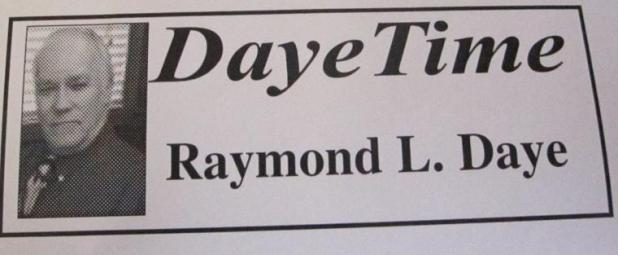
DayeTime: Easter series '8 Days In Jerusalem' begins Palm Sunday
It is a familiar story that has been called “The Greatest Story Ever Told.” It is the story of Jesus Christ’s week in Jerusalem, from what we know as Palm Sunday through Resurrection Sunday.
As I did last year, I will be running a daily news article summarizing events included in the Gospel accounts of that historic week.
It is a familiar story told in the familiar format of a newspaper article.
It is my intent that it might shed some additional understanding into the events of Easter Week more than 2000 years ago. It is not my intent to preach a series of sermons on the events of that week.
The series includes photographs of paintings by master artists of the 1800s, with the artist’s name listed in the same way we note the photographer in our newspaper -- with the added info on the artist’s birth and death dates.
Those reading the series will note that the day’s accounts may include things that happened late at night on that day. For purposes of this series, I strayed from realism slightly to enable including each day’s major events in that day’s article.
For the most part, the articles stick to information presented in the four Gospels. There are a few historical references that were added and a foreshadowing of Jerusalem’s destruction in 70 A.D. -- predicted by Christ during Easter Week -- to put the events of that week into historical perspective.
Nothing was fabricated, except some literary license to quote "unnamed sources" close to Pilate or Caiphas -- but even those are comments supported by Biblical and historical sources.
Readers will note the articles do not use the term “Christ” as a part of Jesus’ name. Instead, the article uses terms a local reporter would have used to identify a person back in the 1st Century A.D. Those names include Jesus of Nazareth or Jesus the Nazarene, since the use of one’s hometown was often used to differentiate him from someone with the same name.
Jesus bar-Joseph is also used, which means Jesus the son of Joseph. Joseph was identified as Jesus’ earthly father, and that was also a way to differentiate among people with the same name.
Jesus the carpenter is used, because one’s occupation is another source of what later became surnames.
Time references are based in the 1st Century, such as references to Passover and the Exodus. The Israelites are believed to have left Egypt about 1,300 years before the Crucifixion.
This story can be read simply for entertainment or it can be a prompt for the reader to undertake their own study of the Scriptures to see what insights they may reveal that this series missed.
In the past I used the English days of the week to mark which day the events happened. This time I am not using the name of the day of the week. I say today, yesterday, tomorrow and “earlier in the week.” However, I do include our time-of-day references to p.m. and a.m. to better explain the day's events.
As with a newspaper’s coverage of any event, not everything that happened or was said can be included. The main actions, comments and events of the day are addressed in that day’s article.
I hope you enjoy the series.
